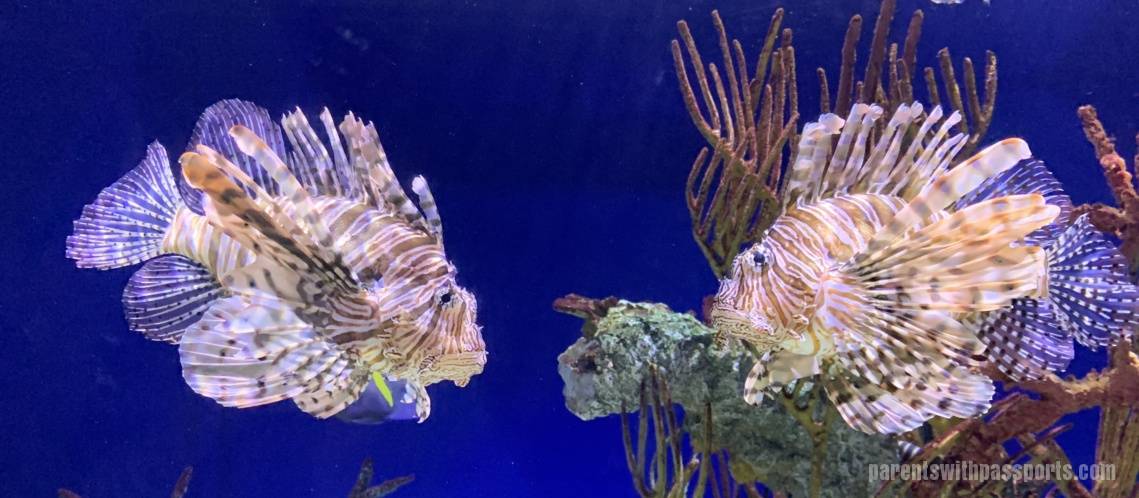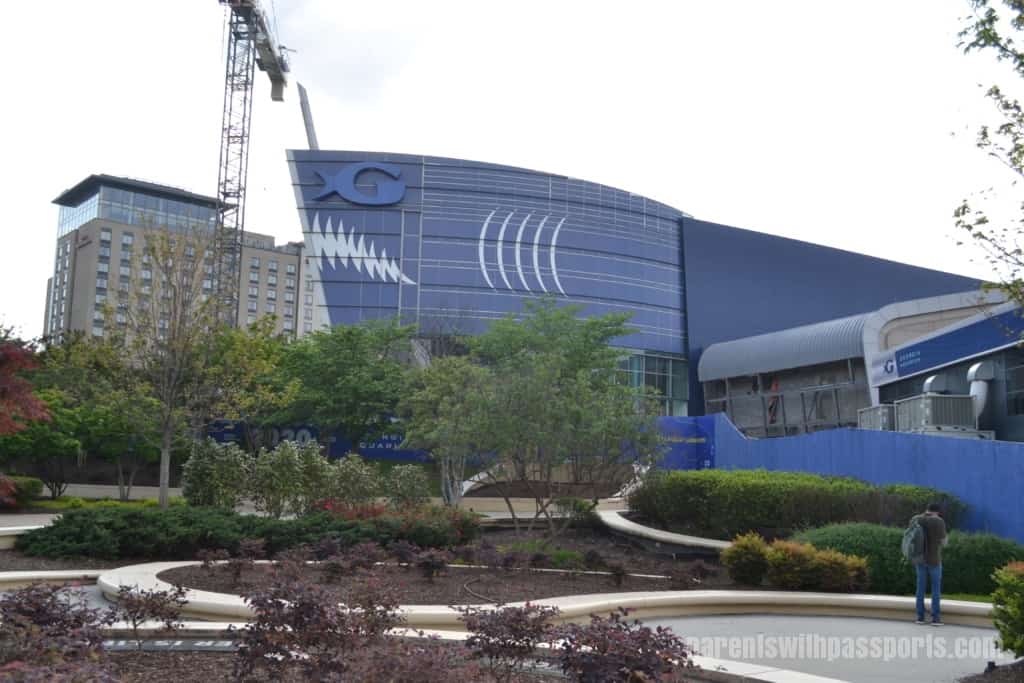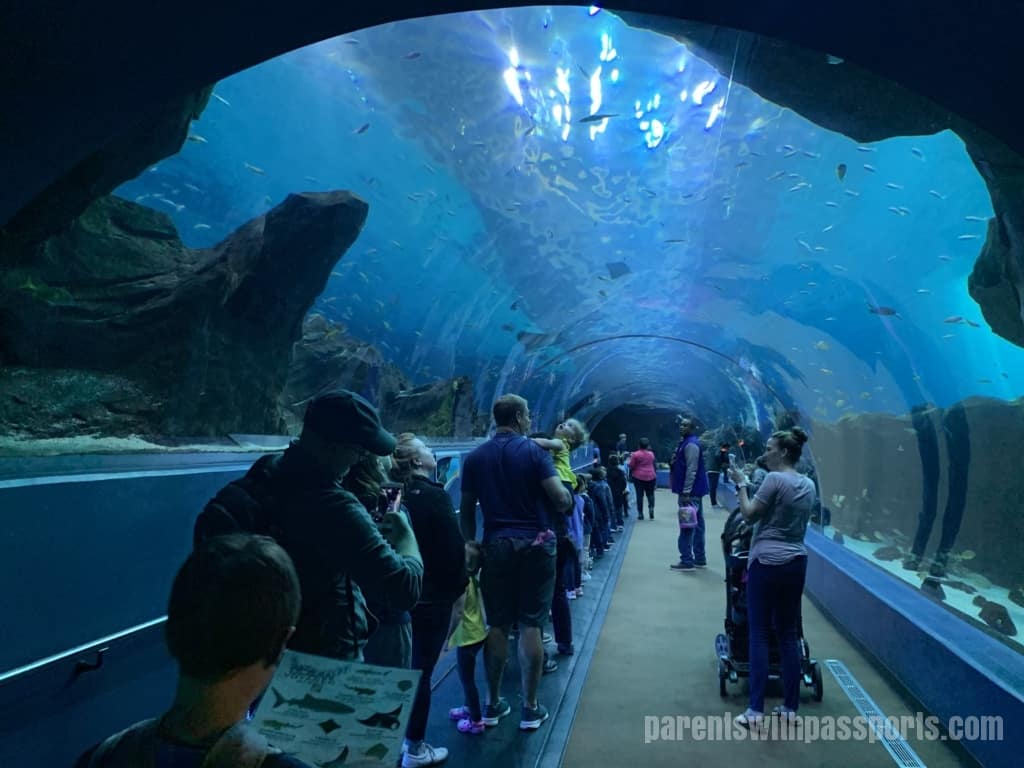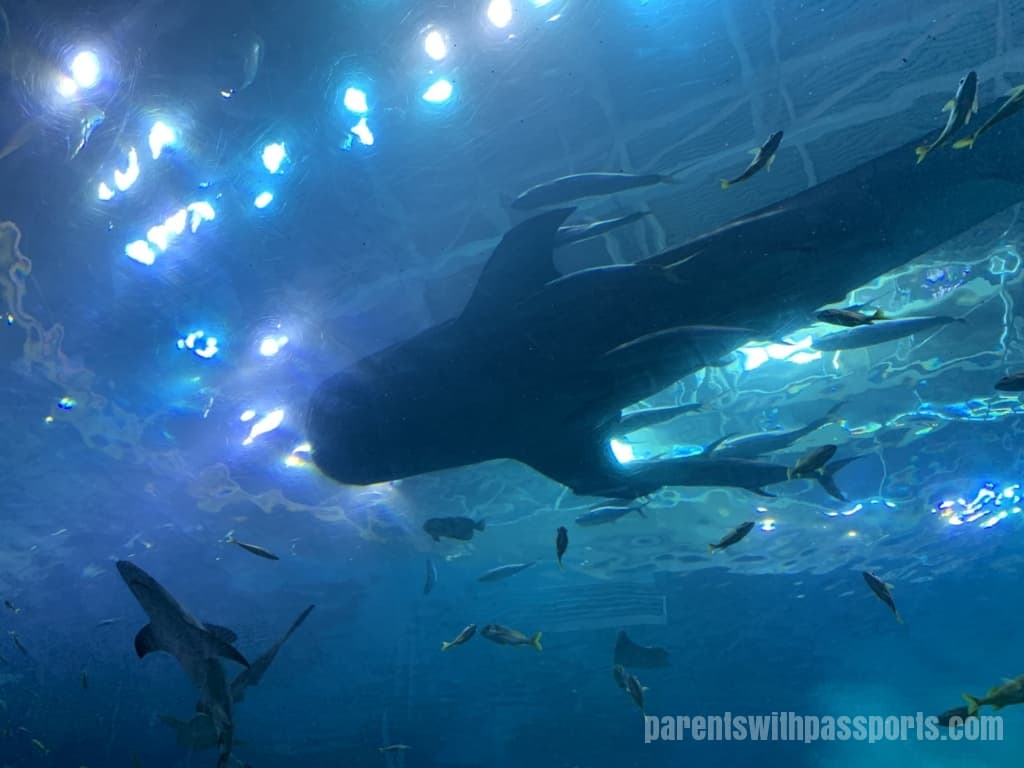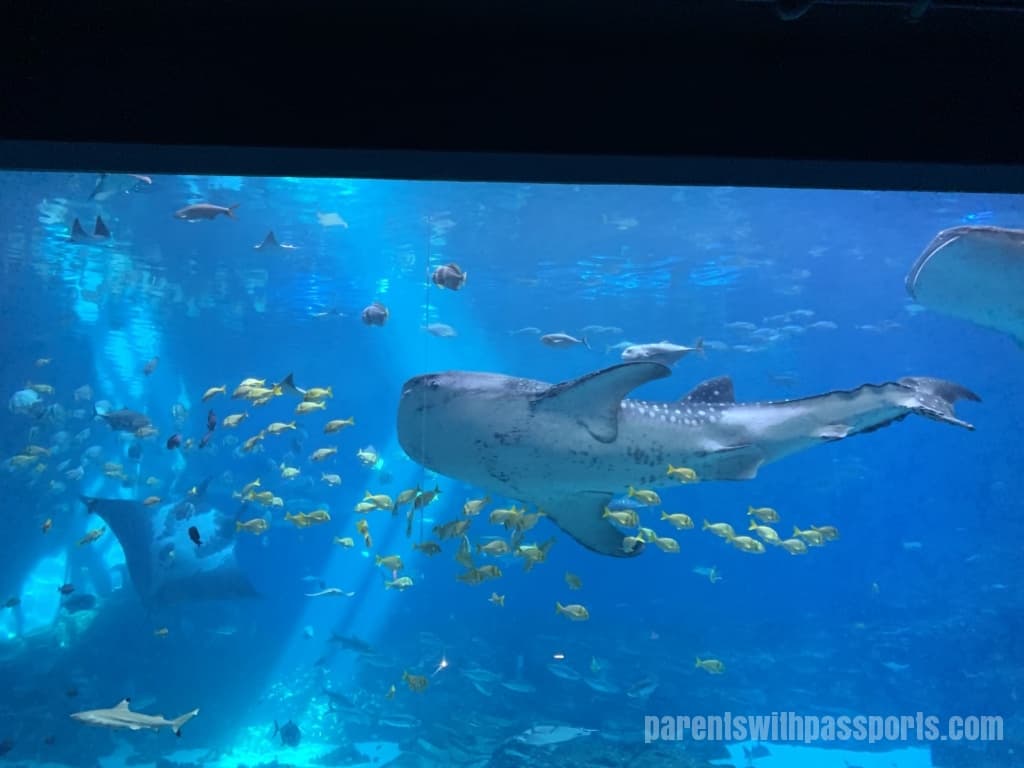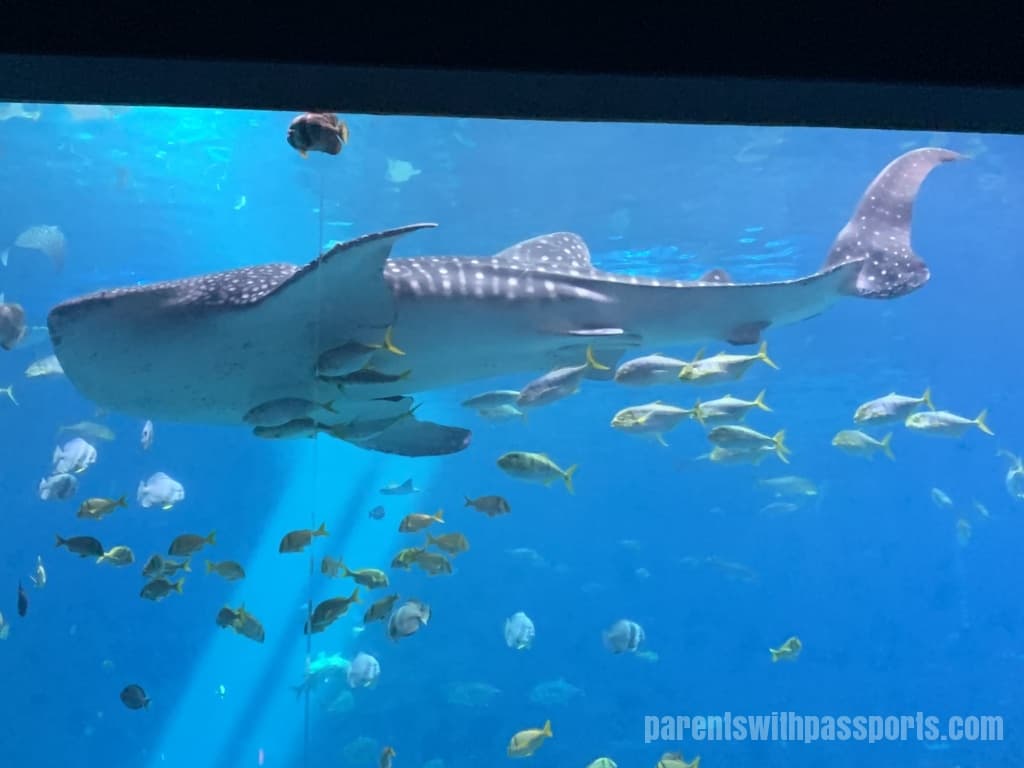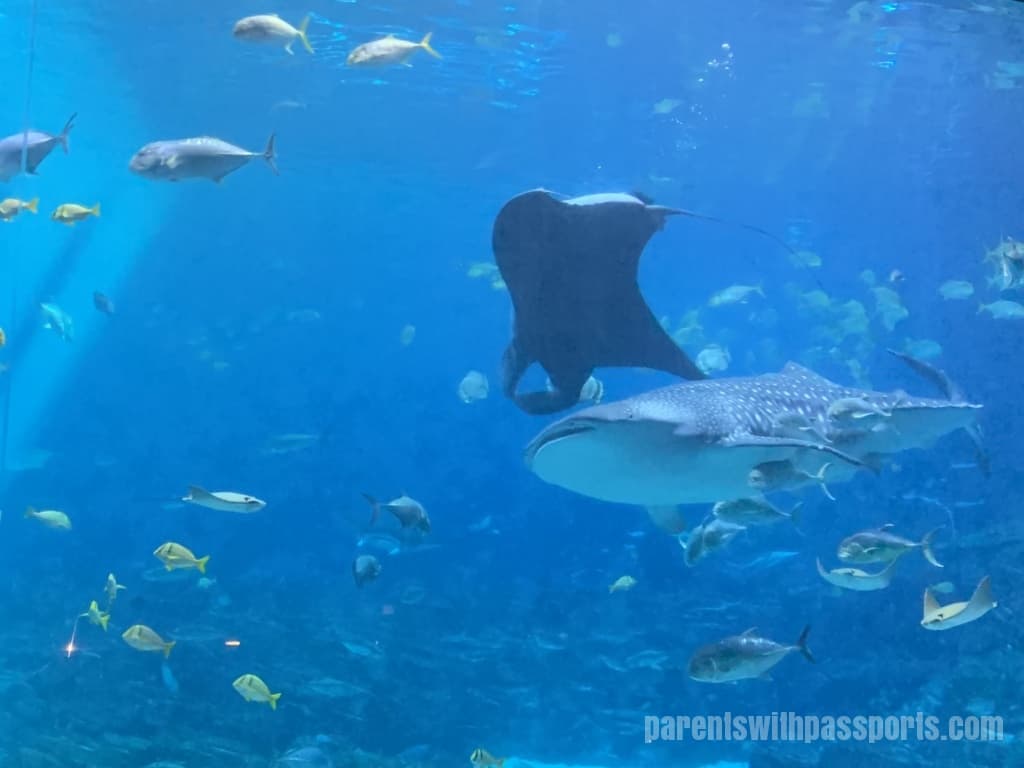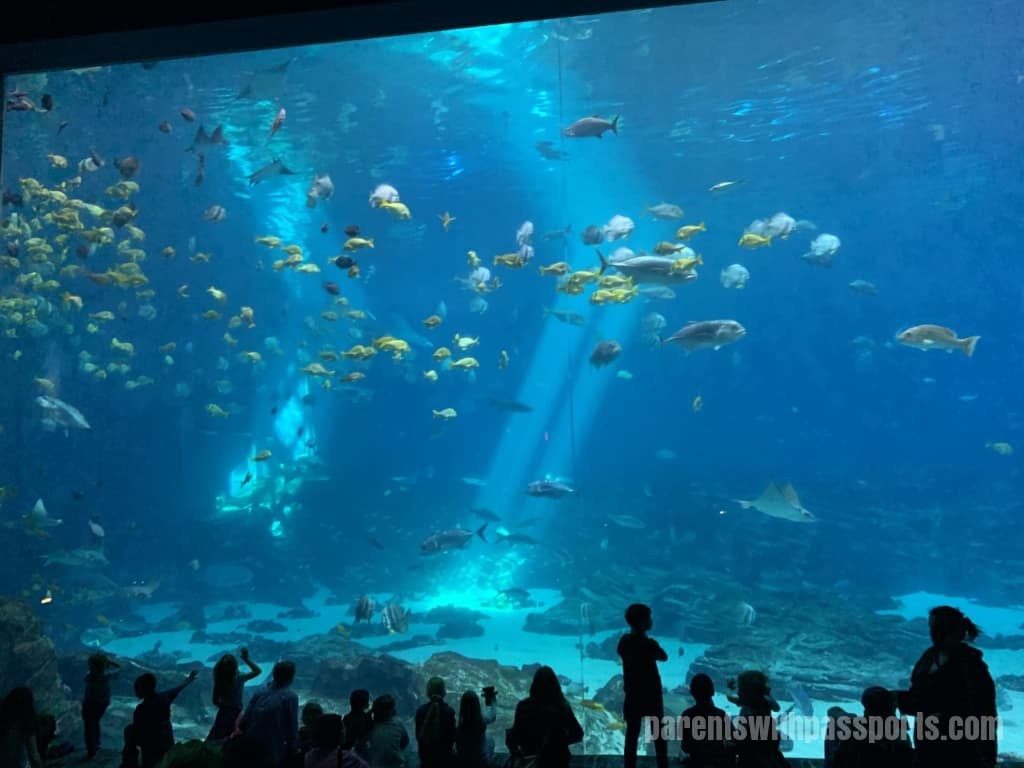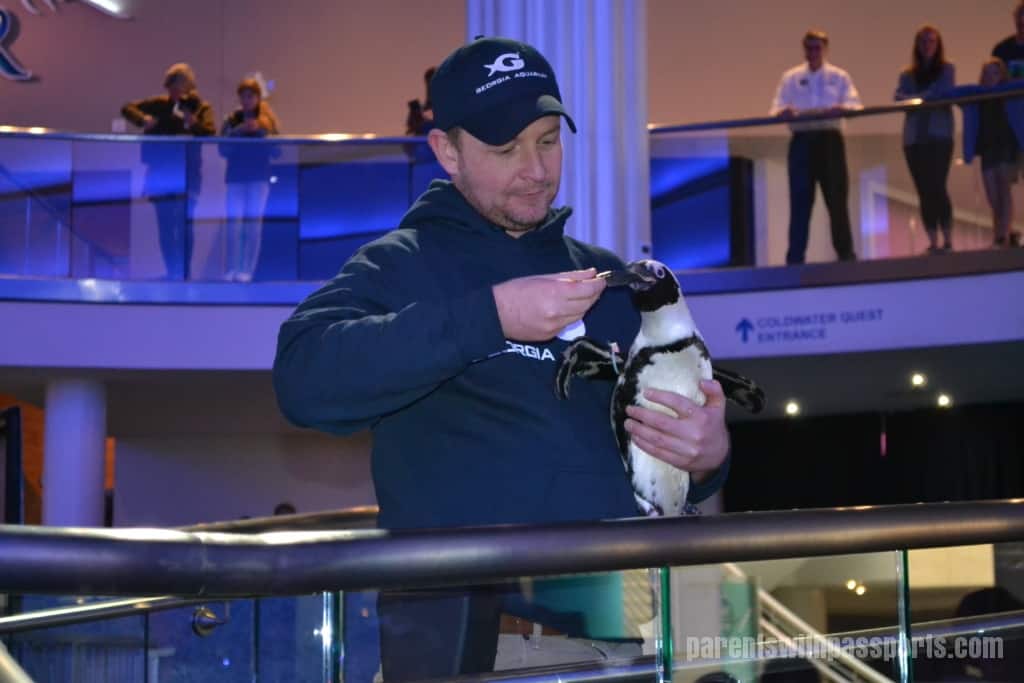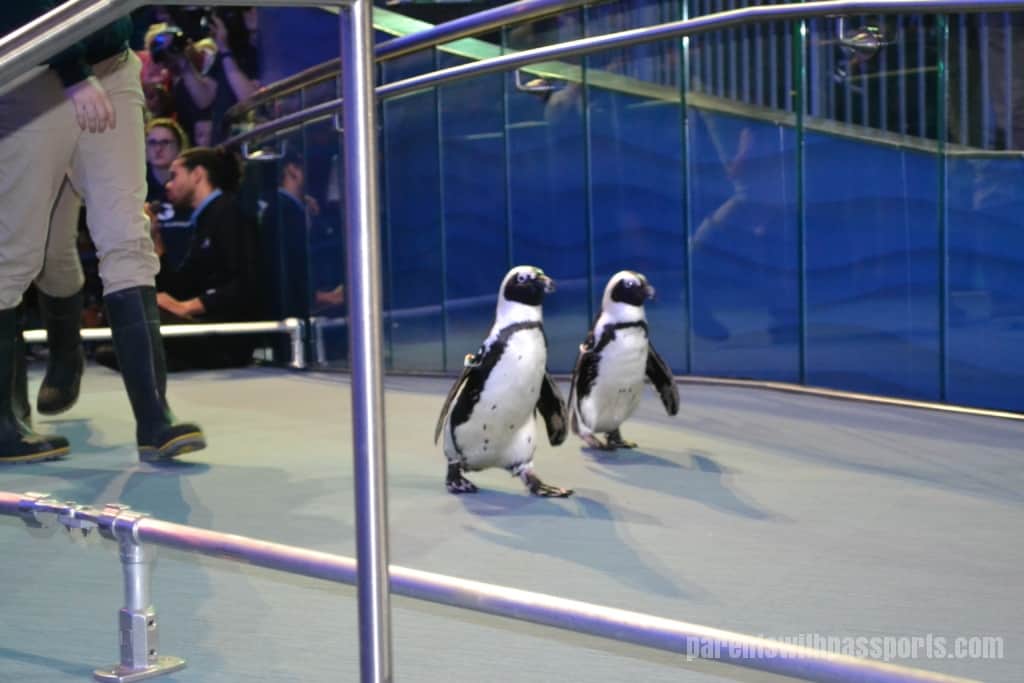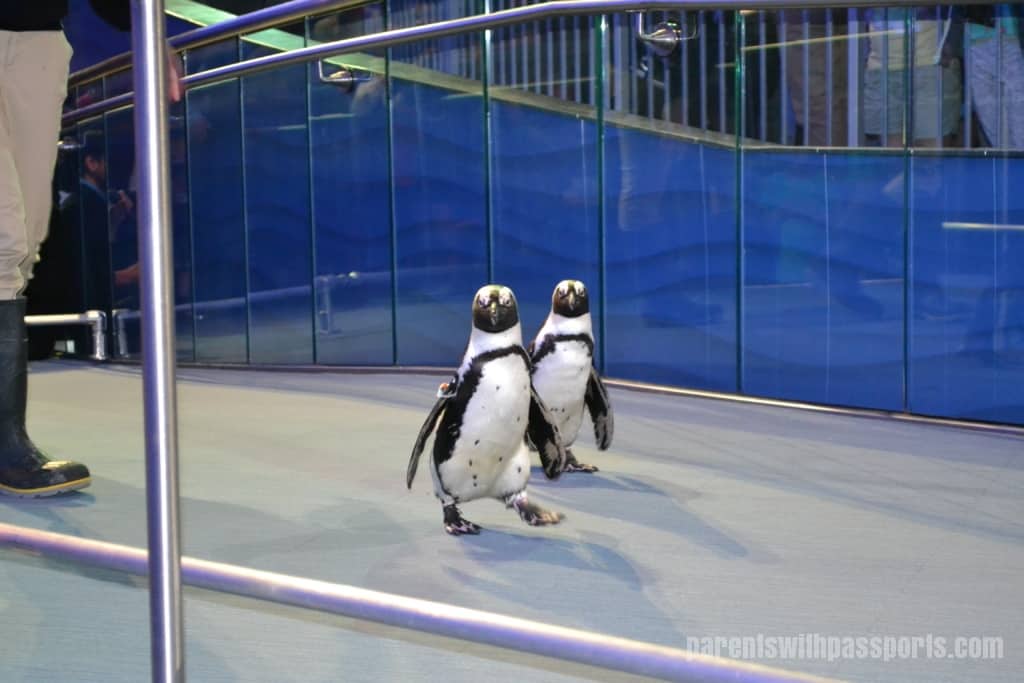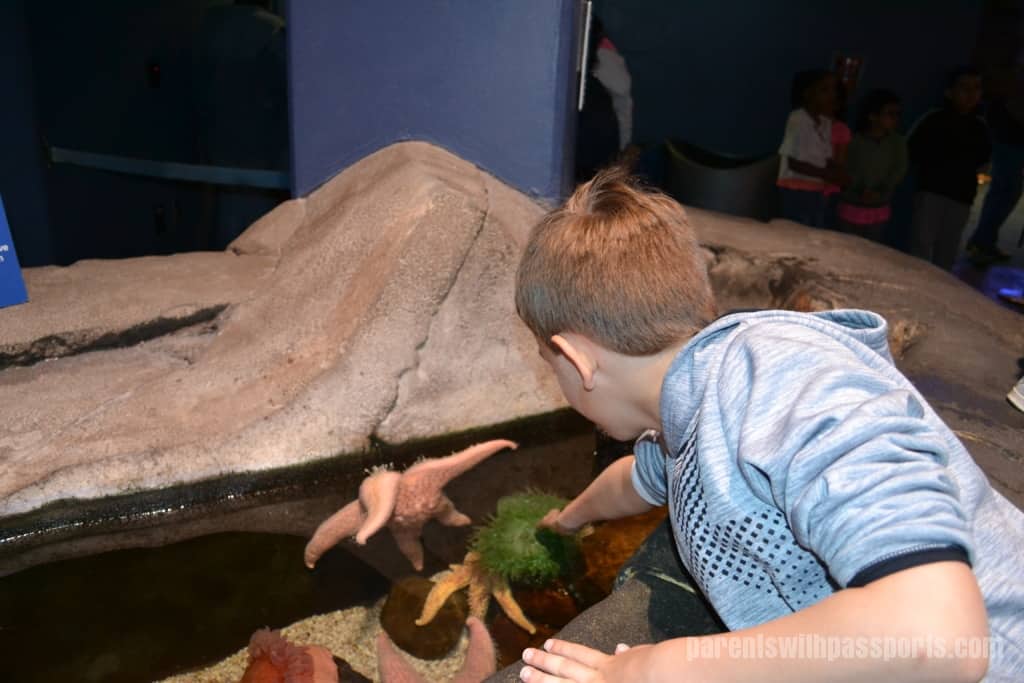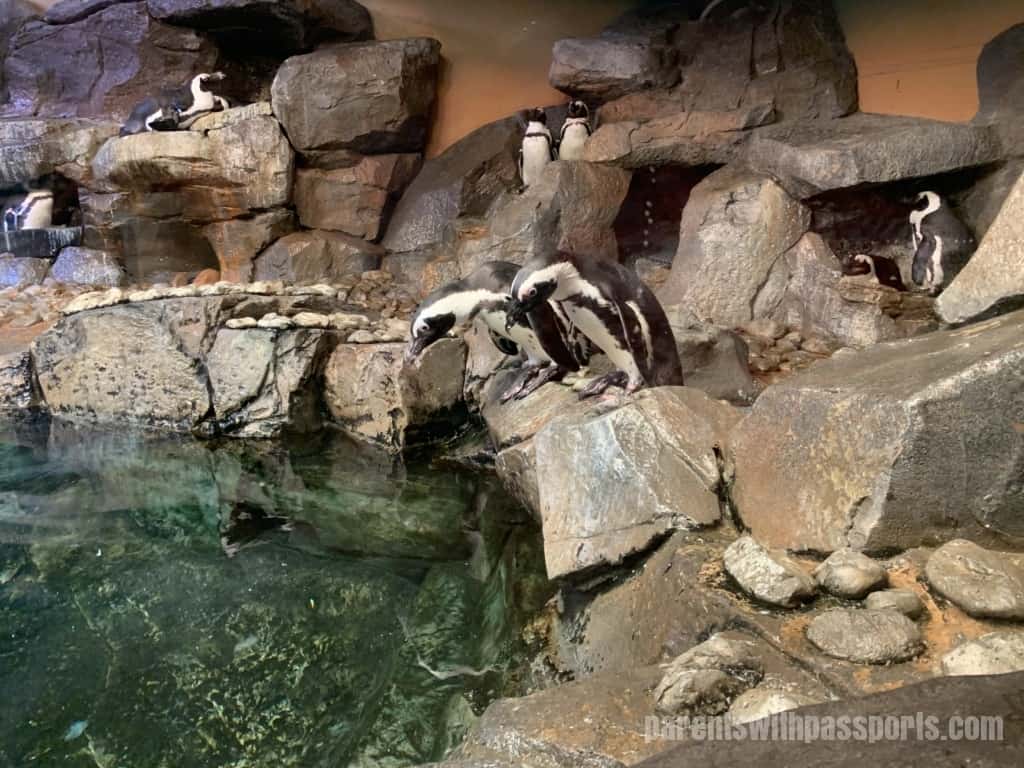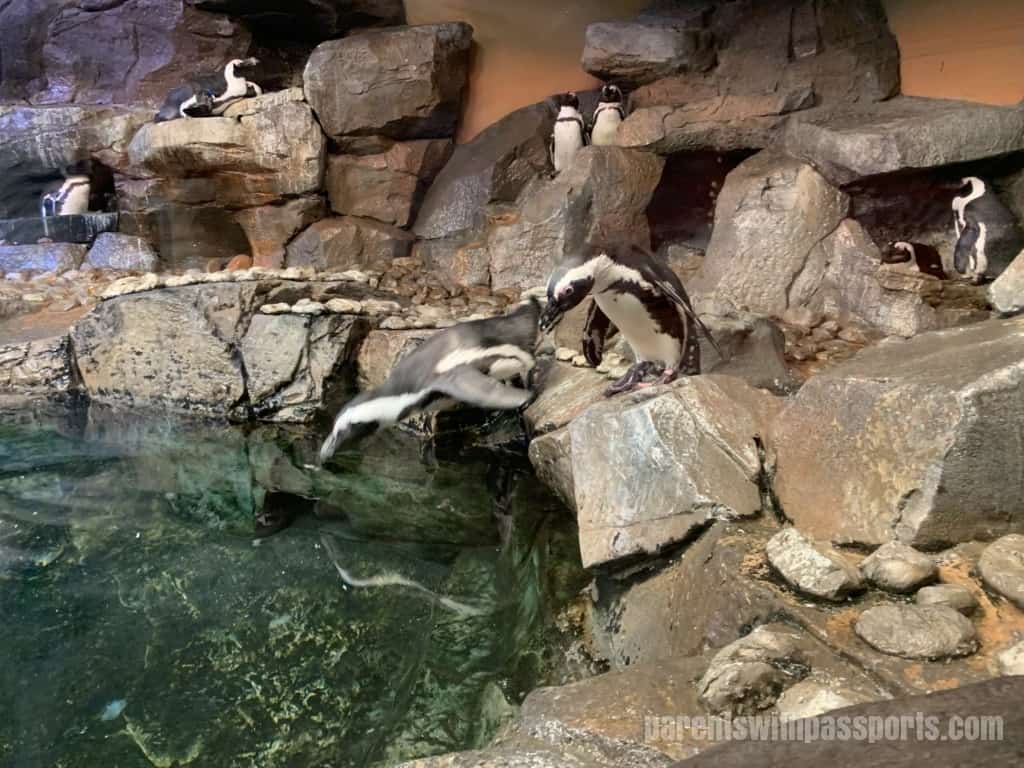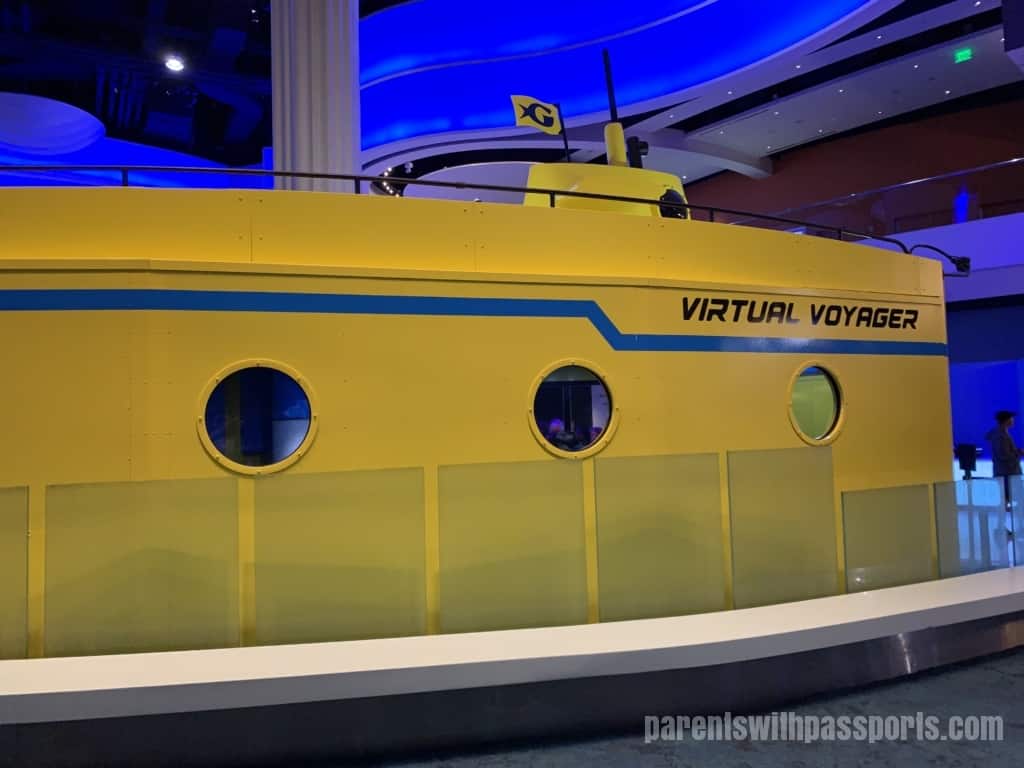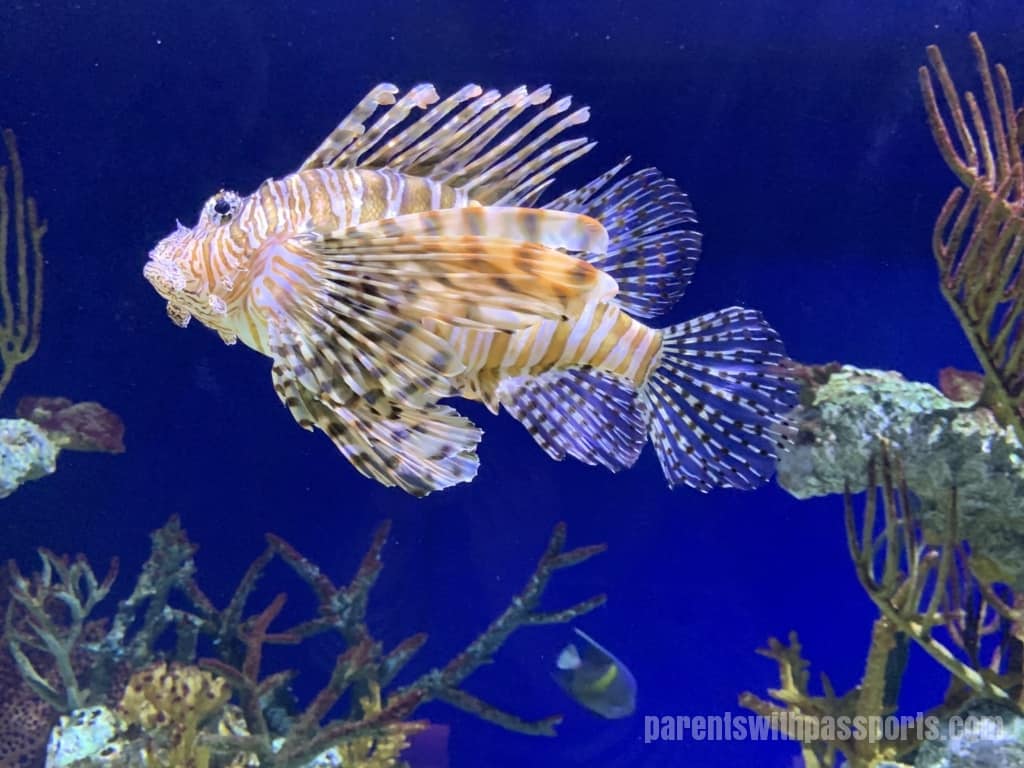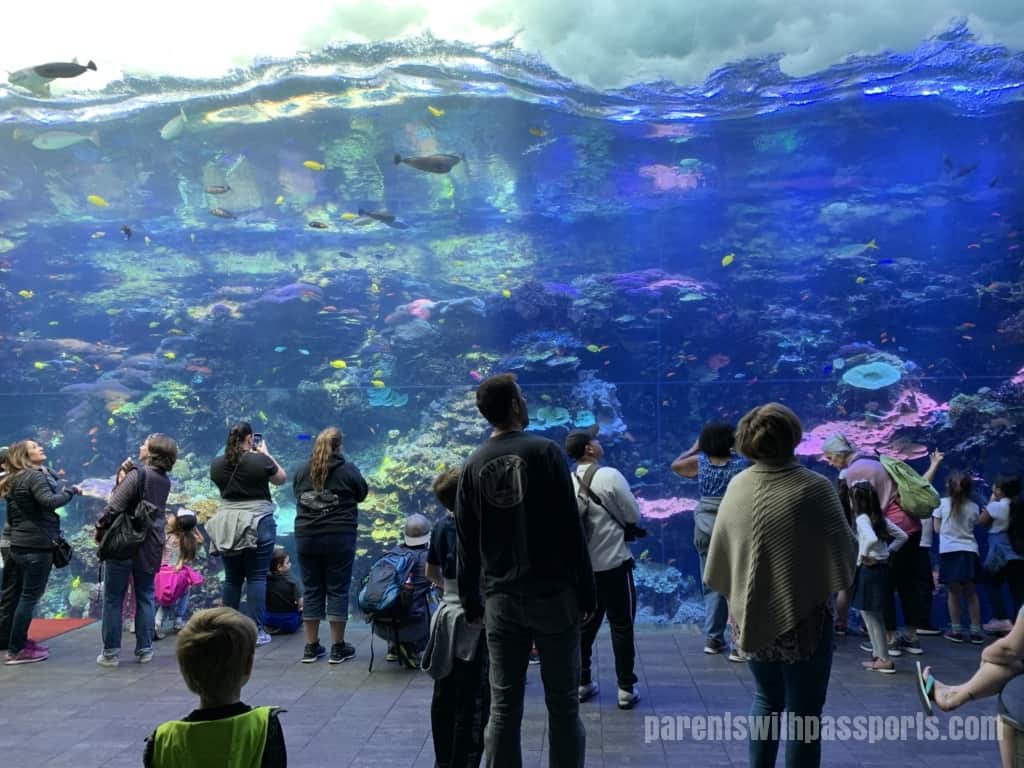Our family loves aquariums. LOVES them. I’m not sure how (or why) we waited this long to make the 5 hour drive to the second largest aquarium in the world, but it was one of the deciding factors in our spring break location selection. We could not wait to go here on our trip. (Although technically we did wait until Monday, figuring that a sunny weekday might be slightly less busy than a rainy weekend.)
Funded by a $250 million dollar gift from Home Depot founder Bernie Marcus, the Georgia Aquarium opened in 2005 with over 100,000 different species living in over 100 tanks with 8 million gallons of water. Several small expansions have taken place over the years, and construction is underway for the aquarium’s biggest expansion to date – a 41,000 square foot addition for a shark gallery. Cranes and fenced off areas surrounded the exterior of the aquarium, although the construction did not interfere with the existing exhibits inside. The new exhibit is scheduled to open in late fall 2020 and I’m guessing will entice us for a return visit at some point not too long after that.
The building itself was originally designed to look like a giant ship breaking through a wave, but a clever painting job now has it resembling a shark in honor of the expansion project.
We got there shortly after it opened and used our CitiPASS to skip the line. We were inside the aquarium in no time and stood in the center lobby, taking it all in. There are 7 exhibit halls, all visible from the main lobby. The layout makes it easy to pick a starting exhibit and then just choose a direction and visit each of the remaining exhibits in order. The exhibits and their featured animals are listed below.
- Tropical Diver – coral reef with thousands of colorful reef fish
- Ocean Voyager – whale sharks, manta rays, and thousands of other fish
- Cold Water Quest – sea otters, African penguins, beluga whales, and harbor seals
- Dolphin Coast – bottlenose dolphins
- River Scout – alligators, turtles, and freshwater fish
- Pier 225 – California sea lions
- Aquanaut Adventure – discovery zone with hands-on adventures
While we were standing in the atrium formulating our strategy, we were greeted by one of the aquarium’s whopping 1,100 volunteers. He gave us the invaluable tip to start in the Ocean Voyager exhibit because there were several large elementary school groups scheduled to visit later that morning and that is always where they head first. So we went straight to that exhibit and largely beat the crowds.
The Ocean Voyager exhibit was designed around the whale sharks, the largest fish in the world. According to the aquarium’s website, the exhibit has “4,574 square feet of viewing windows, a 100-foot-long underwater tunnel, 185 tons of acrylic windows and one of the largest viewing windows in the world at 23 feet tall by 61 feet wide and 2 feet thick”.
The underwater tunnel was fantastic. It was amazing to see the fish and sharks swimming over your head. The tunnel featured the world’s slowest people-mover (not an official designation) along the left-hand side and a pathway on the right side for strollers and those who wanted to walk at their own pace. Pictures don’t do it justice because of the inevitable reflections but they at least give you an idea of what it looked like.
If we were impressed with the underwater tunnel, we were blown away by the viewing window at the end of the tunnel. We were almost immediately greeted by two gigantic whale sharks swimming by, surrounded by a school of yellow fish. Within seconds a manta ray was in the mix, gracefully somersaulting around the whale shark. I think we could have spent the entire afternoon just sitting there watching the amazing display.
We got lucky with timing when we left the Ocean Voyager exhibit. As soon as we walked out, they started to rope off a section of the lobby, preparing for an animal demonstration. A volunteer told us that they were setting up for the Waddle Walk, a daily parade of penguins across the atrium. He told us where we would have the best view and we grabbed a spot and waited about 5 minutes for the penguins to make their appearance. Two little guys waddled down the ramp following their trainers. The trainers gave a short talk and fed the penguins before they headed back up the ramp. Penguins have been my favorite animal since I was a little kid and I loved getting to see them up close.
Our route took us into Cold Water Quest next so we essentially followed the penguins as they headed back to their home. But first we stopped at the awesome touch tank that featured colorful sea stars, sea urchins and sea anemones.
The penguin exhibit was really cool. There is a pop-up window in the exhibit so you can get in the middle of the action and an acrylic tunnel so you can watch the penguins swim over head.
We also loved the puffins and the sea otters in Cold Water Quest. The sea otter was especially entertaining. He had a floating ball with treats in it (similar to Kong dog toys) and would float around on his back and pound it into the rocks behind him, trying to free the treat. Everybody was so excited when a piece would come out and he’d happily chomp on it. It was adorable and we had a hard time pulling ourselves away.
The beluga whale was the final showcase animal in Cold Water Quest. The melon on top of the beluga’s head (that’s actually what it’s called!) makes it look a little like a cartoon character. (And the beluga whale is, in fact, a cartoon character thanks to Bailey in Finding Dory.) They stand out among the many colorful fish in the aquarium because they are totally white.
Following our counter-clockwise route around the aquarium, we came next to the Dolphin Coast exhibit. The Dolphin Celebration show features bottlenose dolphins and their trainers and showcases the animals’ intelligence and athleticism. We thought we had perfect timing because the next show started in 20 minutes, but we were disappointed to find out that the 1,800 seat theater was already full. We weren’t specifically following the show schedules and thought we had just lucked into good timing like we did with the Waddle Walk. It didn’t work out and we were fine with just moving on to the next attraction. (Reserved seats are available for $5 if you don’t want to miss it and/or don’t want to wait a long time.) But as we made our way around to the exhibit exit, we did get a sneak peak of the dolphins swimming around the backside of their enclosure so all was not lost.
Next up was the River Scout exhibit, featuring freshwater fish from around the world. The gallery itself here was as impressive as the fish. With waterfalls and a river flowing above you, it was a neat exhibit to walk through. Each exhibit has laminated creature sheets that help you identify the different fish on display. The boys had picked them up in the other exhibits but this was the first one where they really used them to identify the fish around them.
We had almost made our way all around the aquarium but took a quick break to take a ride on the Virtual Voyager (or at least the rest of the family did; I passed). A “motion-based reality ride”, riders board a submarine and put on virtual reality goggles for some up close and personal underwater encounters. The younger boys liked it; the oldest boy felt a little nauseous after it. I was glad I skipped it – I think the VR goggles alone would have been ok but the goggles plus the seats jerking back and forth made it a hard no from me. (Cost was $10 per person.)
We spent some time playing with the California sea lions through the glass at Pier 225 and then headed into the final gallery, Tropical Diver. This was a fitting end to our visit. There was no let-down here as we got to see so many of amazing creatures that make the Indo-Pacific Barrier Reef their home. From the lionfish (the all-time coolest looking fish!) to jellyfish to actually finding both Nemo and Dory, this exhibit was an exciting and colorful way to end our visit.
The Georgia Aquarium completely lived up to and even exceeded our expectations. It is fantastic. Each exhibit was amazing in its own right. Their 4R program (rehabilitation, responsibility, rescue, and research) only makes it more appealing. It’s nice to know that a place as impressive as this can exist both for our enjoyment and for the conservation of fish life. It is worth a trip to Atlanta on its own. Go visit – you will not be disappointed.
